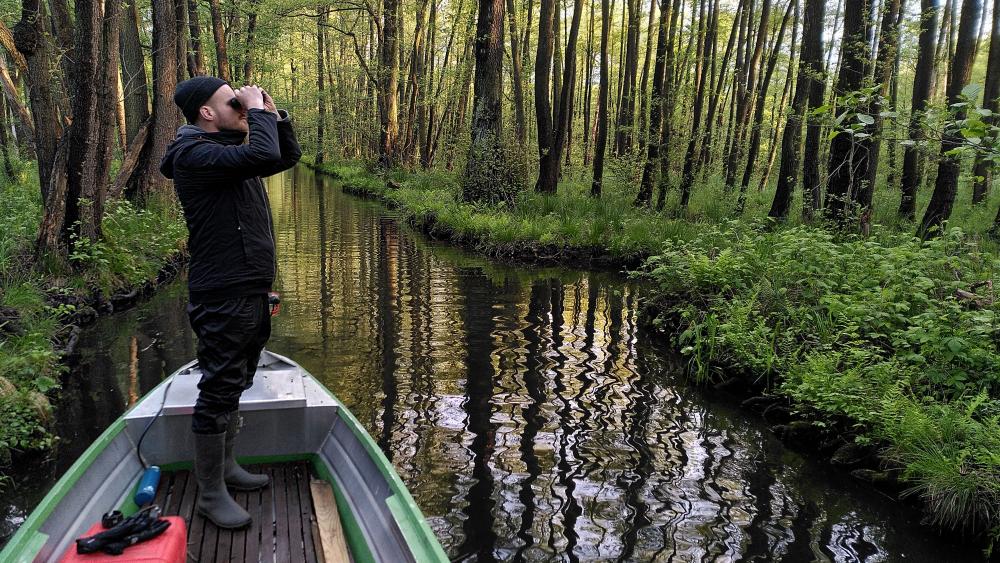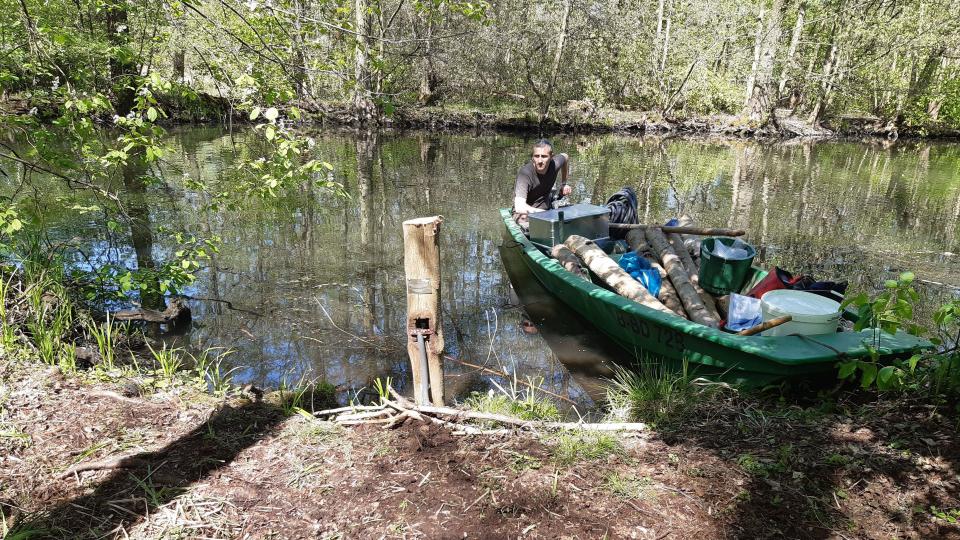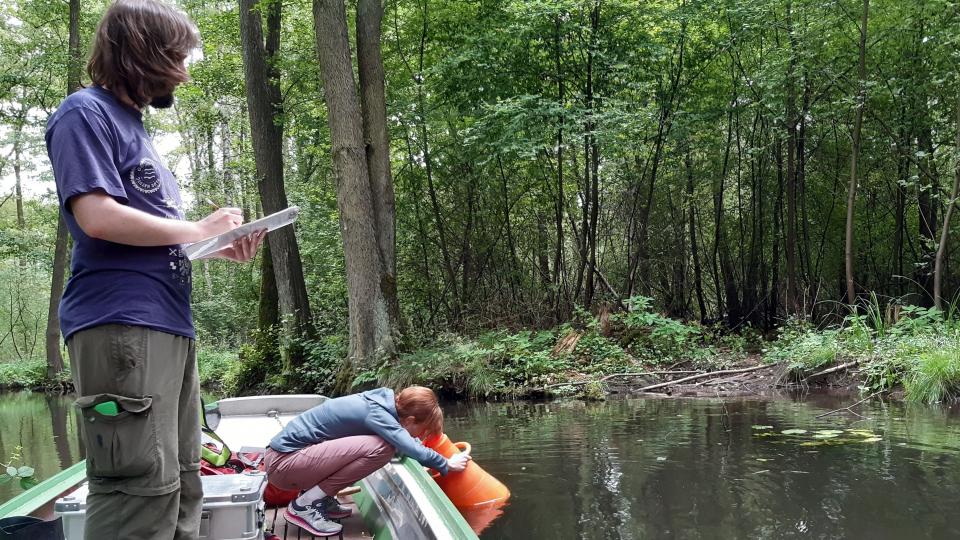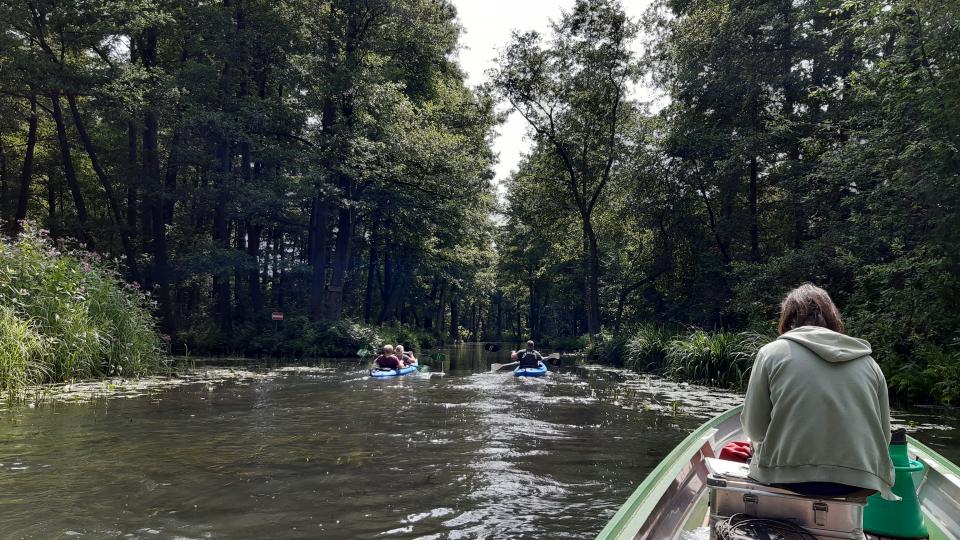
Benjamin Wegner observes and counts birds on the banks of the Spreewald rivers. I Photo: Aquatag
On the banks of the Bürgerfließ near Lübbenau in the Spreewald, IGB doctoral student Benjamin Wegner checks an infrared counter mounted in a deadwood peg – barely visible to the passing boats that the sensor registers. "We get a signal for each person and boat. The numbers are stored in a database. No personal data is collected or pictures taken", explains Benjamin Wegner.
The experiment is part of the project Aquatag – Recreational activities on inland waters: Dynamics, ecological impacts, social significance and sustainable management. Here, researchers are investigating the recreational behavior of people in and around inland waters. In the Spreewald, the team wants to measure how many boats and people are traveling on the rivers and whether these affect the environment. To do this, they have equipped nine stretches, each at least 1.3 kilometers long, with infrared counting devices. The stretches were chosen to be in areas with varying levels of traffic: three watercourses that are not used, three stretches with little traffic and three stretches with heavy traffic.
"Motorboats are not allowed in the Spreewald, but even paddling can disturb animals and damage plants. We are researching how pronounced these impacts are depending on the strength of use," says IGB researcher Dr. Christian Wolter, who is leading the experiment. In particular, the researchers want to find out whether threshold values play a role – i.e. user densities from which critical damages of species become highly probable.
Evaluating touristic management of the biosphere reserve
For example, the team is mapping the extent, frequency and possible damage to aquatic and riparian plants such as hornwort, water lilies, reeds and sedges. Fishing surveys shall provide information on whether the composition and fitness of fish populations are being affected. Researchers are counting and observing birds to note differences in territoriality and breeding behavior.
The administration of the biosphere reserve is an important cooperation partner for the team – and eager to receive the data. After all, those responsible have defined the canoe routes for the Spreewald and must now evaluate whether recreation, tourism and nature conservation can be reconciled. "Our research can help them manage the Spreewald sensibly – for people and nature. That's a good feeling", sums up Benjamin Wegner.

Jan Hallermann vom IGB bringt ein Infrarot-Zählgerät am Ufer der Hauptspree an. I Foto: Aquatag

Das Team untersucht und kartiert die Vegetation in und an den Untersuchungsstrecken. I Foto: Aquatag

Auch Paddler können im Biosphärenreservat ihren Abdruck in der Natur hinterlassen. Das Team von Aquatag untersucht seine Ausprägung. I Foto: Aquatag





